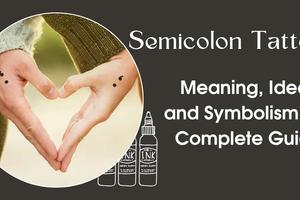Everything You Need to Know About Tattoo Removal: Methods, Myths & Mistakes to Avoid

Key Takeaways
Essential insights to remember
Laser tattoo removal is the safest and most effective option, especially for dark ink.
At-home creams and natural remedies rarely work and can be dangerous.
Cost, sessions, and effectiveness vary by method and tattoo type.
Professional consultation is key to avoid scarring and complications.
Some tattoos can’t be fully removed — but cover-ups may help.
Introduction
Tattoos were once considered a lifelong commitment—but thanks to modern technology, tattoo removal is now safer, more effective, and more accessible than ever. Whether it’s a design that no longer reflects your personality, a name from a past relationship, or a professional requirement to appear ink-free, many people seek to remove unwanted tattoos for a wide range of personal and practical reasons.
The global tattoo removal market is projected to reach over USD 5.5 billion by 2032, a testament to the growing number of people reconsidering their ink. In this comprehensive guide, we’ll explore the best tattoo removal methods, examine costs and risks, and share expert tips to help you make an informed, skin-safe decision. From laser procedures to lesser-known alternatives, and even the risky realm of DIY methods, every aspect of tattoo removal will be unpacked in detail.
How Tattoo Removal Works
Tattoos become permanent because the ink is deposited into the dermis, the second layer of skin, where it remains trapped by your body’s immune system. When ink particles are injected, specialized immune cells called macrophages attempt to engulf and eliminate them. However, tattoo pigment particles are too large to be naturally flushed out, so they stay in place—sometimes for life.

Tattoo removal techniques aim to overcome this barrier by either:
- Breaking ink into smaller particles that can be metabolized (e.g., laser removal),
- Physically removing the ink-containing skin layers (e.g., dermabrasion or excision), or
- Inducing skin renewal through chemical agents or abrasives.
““⚠️ Note: The deeper the ink, the harder it is to remove, especially in tattoos done by professionals using modern equipment.
Your body plays a major role in tattoo fading after removal procedures. Once the ink is fragmented (as with laser pulses), the lymphatic system begins clearing the debris. This biological cleanup explains why fading occurs gradually over several weeks or months post-treatment.
Types of Tattoo Removal Methods
Choosing the right tattoo removal method depends on various factors, including your skin type, the size and color of your tattoo, your budget, and how quickly you want results. Each removal technique has its own mechanism of action, level of effectiveness, and associated risks. While laser removal remains the gold standard for most cases, alternative methods like dermabrasion and surgical excision are still practiced, particularly for specific scenarios like small or deeply pigmented tattoos. Below is a comparative overview of the most commonly used tattoo removal techniques:
Each method varies not only in efficacy and side effects but also in the time it takes for visible results to show. Understanding this comparison allows you to set realistic expectations and choose an approach that aligns with your personal goals and skin health.
Laser Tattoo Removal: The Gold Standard
Laser tattoo removal is widely regarded as the most effective and safest option available today. It works by delivering short pulses of highly concentrated light energy—typically from a Q-switched laser or a more advanced PicoSure laser—directly into the tattooed skin. This energy targets the ink particles, heating and shattering them into microscopic fragments that your immune system can naturally clear over time.

Why It’s So Effective
- Targets ink without damaging surrounding tissue
- Can treat multiple colors (with different wavelengths)
- Lower risk of scarring compared to other methods
- Compatible with most skin tones (e.g., Nd:YAG lasers for darker skin)
What to Expect During Treatment
- You may feel a snapping sensation (similar to a rubber band)
- Sessions last 10–30 minutes depending on tattoo size
- Numbing cream or cold air devices may be used to minimize discomfort
- Results are gradual and require patience—especially for multi-colored or older tattoos
Laser Aftercare Tips 🩹
Proper aftercare significantly reduces side effects and enhances results.
- Apply antibacterial ointment daily for several days
- Avoid direct sunlight for at least 2 weeks
- Keep the area clean, dry, and loosely covered
- Do not pick scabs or blisters that form
Common Side Effects
- Temporary redness, swelling, or blistering
- Mild discomfort similar to sunburn
- Rarely, hyperpigmentation or hypopigmentation
““💡 Pro Tip: Laser treatment is most effective on black, blue, and green inks. White, yellow, and red inks are harder to remove and may require more sessions.
With the right laser, experienced technician, and aftercare compliance, many tattoos can be faded to near-invisibility—or even erased entirely over multiple sessions.
Surgical Tattoo Removal (Excision)
Surgical tattoo removal, often referred to as excision, is a clinical method that involves physically cutting out the tattooed skin. Unlike other techniques that attempt to break down ink within the dermis, excision removes the ink entirely by removing the skin that holds it. Though it's the only method that offers guaranteed full tattoo removal, it leaves a permanent scar, making it a suitable choice only in specific circumstances.

How the Procedure Works
This procedure is performed under local anesthesia in a sterile clinical environment. A scalpel is used to excise the tattooed skin, and the surrounding skin is then pulled together and stitched closed. If the tattoo is too large, the excision may need to be completed in stages or followed by a skin graft to cover the wound.
Who Is a Suitable Candidate?
This method is typically recommended for:
- People with small tattoos (e.g., under 3 inches)
- Those who require complete removal in a single session
- Patients with good skin elasticity and wound healing
- Individuals for whom laser removal is not viable due to allergies or past treatment failure
Benefits of Surgical Excision
✔️ Advantages
- Immediate and complete tattoo removal
- No need for multiple sessions
- No lasers or pigmentation
- Specific devices needed
❌ Disadvantages
- High risk of visible scarring
- Not suitable for large or intricately shaped tattoos
- Downtime and follow-up required
- Risk of keloid or hypertrophic scarring
Cost & Healing Timeline
Here’s a breakdown of typical costs and recovery expectations:
Expert Insight
“““Surgical removal offers complete elimination, which many patients appreciate. But they must understand that the trade-off is a permanent scar. This option should be considered only after a detailed consultation.”
— Dr. Marianne Collins, Dermatologic Surgeon, Sydney
Dermabrasion
Dermabrasion is a manual method of tattoo removal that uses controlled skin abrasion to reach the dermis and remove embedded ink. This method predates laser removal and is now less commonly used due to its unpredictability and higher risk of complications. Still, it remains an option in specific clinical cases, particularly when lasers are contraindicated.

How Dermabrasion Works
In this procedure, a clinician uses a high-speed rotary device with a rough brush or diamond fraise to "sand" the skin. This abrasion removes the upper layers of the skin, exposing the deeper dermis where ink particles reside. As the treated area heals, the skin may expel or naturally absorb some of the broken-down pigment.
Who Should Consider Dermabrasion?
Dermabrasion is not suitable for everyone. It may be considered by:
- Patients with shallow or faded tattoos
- People allergic to or medically unfit for laser treatment
- Individuals with lighter skin types (to avoid pigmentation issues)
- Those without a history of keloid scars or chronic skin inflammation
““⚠️ Warning: Individuals with darker skin tones, active acne, eczema, or on blood thinners should avoid dermabrasion due to increased risk of hyperpigmentation, prolonged healing, or bleeding.
Benefits and Drawbacks
✔️ Pros
- May require only one session
- Lower cost compared to multi-session laser treatment
- Can be useful for older or faded tattoos
❌ Cons
- Painful and may require anesthesia
- Healing is slow and involves open wounds
- Results vary significantly between individuals
- High potential for scarring and discoloration
Cost, Recovery, and Side Effects
Here is a summary of key factors to consider when evaluating dermabrasion for tattoo removal:
Aftercare Instructions
““🧴 Strict aftercare is vital to reduce the risk of infection and permanent skin damage.
- Keep the area clean, dry, and protected
- Use prescribed ointments and non-stick dressings
- Avoid sun exposure for at least 3 months
- Refrain from scratching or disturbing healing tissue
- Follow all clinical guidance on wound care and antibiotics
Dermabrasion is best reserved for people who have no other suitable options. While it can produce good results in certain cases, it is more invasive than laser treatment and carries significantly more healing risks.
Tattoo Removal Creams & DIY Methods: What to Avoid
The market is flooded with over-the-counter tattoo removal creams, salabrasion kits, chemical peels, and other DIY products claiming to fade or eliminate unwanted ink. These methods appeal to those seeking a cheaper or less invasive option—but the reality is starkly different. Dermatologists and regulatory bodies such as the FDA consistently warn that most home-based solutions are either ineffective, dangerous, or both.

Why DIY and Cream-Based Methods Fall Short
Tattoo pigments reside in the dermis—the second, deeper layer of skin. Most topical creams and natural remedies like lemon juice, salt scrubs, aloe vera, or hydrogen peroxide can only act on the epidermis. As a result, they cannot reach or affect the pigment embedded deeper in the skin.
Even products marketed with ingredients like TCA (trichloroacetic acid) or hydroquinone have limited effectiveness and pose significant risks:
- Chemical burns
- Skin discoloration
- Permanent scarring
- Allergic reactions
““⚠️ Important: No tattoo removal cream has been approved by the FDA for safe or effective ink removal.
Common DIY Methods and Their Risks
🚫 Popular but Unsafe Methods
- Tattoo removal creams: Often contain harsh acids that cause skin irritation
- Salabrasion: Involves scrubbing with salt until layers of skin are removed—extremely painful and prone to infection
- Lemon juice or vinegar: Weak acids that may irritate but won’t reach tattoo pigment
- Dermarolling with chemicals: Can result in chemical burns or permanent textural changes
🔥 Real Risks
- Severe blistering
- Infection requiring medical attention
- Permanent pigment damage (hypopigmentation or hyperpigmentation)
- Psychological distress due to poor cosmetic outcomes
Cost vs. Consequences
Here’s how DIY and topical removal methods stack up in terms of affordability vs. effectiveness and safety:
Expert Opinion
“““People often come to my clinic after using DIY creams with skin that's already damaged—sometimes irreversibly. These products might promise painless removal, but what they deliver is pain, regret, and additional procedures.”
— Dr. Lauren White, Dermatology Specialist
If you're considering tattoo removal, the best course of action is to consult a certified dermatologist or licensed removal clinic. DIY methods may seem cost-effective upfront, but the risks far outweigh the savings—and the scars can last longer than the ink ever would.
Cover-Ups as an Alternative
Not everyone seeking tattoo modification wants complete removal. In many cases, especially when the original tattoo is emotionally significant or partially redeemable, a tattoo cover-up offers a compelling and creative solution. Rather than erasing the ink, this method involves transforming it into an entirely new design—often larger, darker, or more detailed—to mask or reinvent the original work.

How Tattoo Cover-Ups Work
Cover-up tattoos are performed by professional tattoo artists who specialize in ink layering and camouflage techniques. The artist assesses the shape, color saturation, and location of the original tattoo and designs an overlay that:
- Masks unwanted features
- Incorporates existing elements creatively
- Uses strategic shading and line work to dominate the old design
Darker inks such as black, navy, and deep red are frequently used in cover-ups due to their ability to neutralize previous pigments.
Who Should Consider a Cover-Up?
Cover-up tattoos are best suited for:
- People who don’t want to remove the tattoo entirely
- Those with faded or lightly inked tattoos
- Individuals seeking cost-effective and fast solutions
- Those who want to turn a negative memory into artistic expression
““💡 Tip: If your tattoo is bright or highly saturated, fading it with a few laser sessions before a cover-up can drastically improve results.
Benefits and Limitations
✔️ Benefits
- Affordable compared to full removal
- Allows for artistic reinvention
- Can be done in a single session
- No downtime or surgical risks
❌ Limitations
- Old tattoo may still be partially visible under the new design
- Limited by size, location, and color of the original ink
- Not suitable for heavily scarred or damaged skin
Choosing the Right Artist
““🎨 “Cover-up tattoos require experience, creativity, and advanced technical skills. Always choose an artist who has a proven portfolio of successful cover-ups and consult thoroughly before committing.”
— Jesse Vaughn, Award-Winning Tattooist
In summary, cover-ups can be an empowering way to reclaim your skin and narrative. If you’re not ready for removal—or simply want to evolve your ink—this artistic alternative might be the right path for you.
Finding a Qualified Tattoo Removal Specialist
No matter which removal method you choose—laser, surgical, dermabrasion, or combination—the success and safety of the procedure depend heavily on the expertise of the specialist. Tattoo removal requires precise technique, an understanding of skin biology, and access to advanced technology. Choosing the right provider isn’t just a matter of convenience—it’s a matter of avoiding permanent damage to your skin.

Why Qualifications Matter
Tattoo removal, especially when performed with high-powered lasers or surgical tools, is a medical procedure that must be executed with skill. An unqualified practitioner may:
- Use the wrong laser wavelength or settings, causing burns or scarring
- Misdiagnose skin conditions or reactivate skin diseases (like herpes simplex)
- Fail to follow proper sterilization protocols, leading to infection
- Leave pigment behind due to improper technique
““⚠️ Warning: In some regions (like parts of Australia), regulations around laser operators are limited. Always verify licensure and training before treatment begins.
How to Choose the Right Specialist
Look for the following when selecting a provider:
- 📋 Medical credentials (dermatologist, plastic surgeon, or licensed clinician)
- 🔬 Experience with your skin tone and tattoo type
- 🔎 Access to different laser technologies (Q-switched, Pico, Nd:YAG)
- 📷 Before-and-after gallery showcasing past work
- ⭐ Verified reviews and patient testimonials
- 🧾 Transparent pricing and consultation process
If possible, ask your provider:
- How many tattoos they’ve removed successfully
- Whether they’ve worked with multicolored or layered tattoos
- What aftercare support they provide post-treatment
Consultation Checklist
Before committing to treatment, use this checklist to evaluate your specialist:
Expert Tip
““🩺 “Never base your decision on price alone. If it sounds too good to be true, it probably is. A trained professional will focus on your safety, results, and long-term skin health.”
— Dr. Anjali Prasad, Cosmetic Laser Specialist
Finding the right provider is a critical step in your tattoo removal journey. A skilled professional can guide you through options, tailor treatment to your needs, and help you avoid complications while achieving the cleanest possible results.
Before and After: What Results Look Like
Tattoo removal is rarely a one-and-done procedure. It’s a gradual process, and realistic expectations are crucial. The outcome depends on numerous factors—including ink type, color density, skin tone, immune system strength, and how well you follow aftercare instructions. While many tattoos fade significantly or disappear entirely, others may leave behind traces like ghosting, faint pigment, or textural changes in the skin.

What to Expect Over Time
Most patients begin noticing visible fading after 2–4 sessions of laser treatment, though optimal results often require 6–12 sessions spaced several weeks apart. Surgical and dermabrasion methods may show results faster, but with a higher likelihood of scarring. Cover-ups, on the other hand, offer instant visual transformation but retain the ink underneath.
Here’s how the process typically unfolds:
- Session 1–2: Initial pigment fragmentation; mild swelling or blistering
- Session 3–5: Noticeable fading; pigment starts breaking up into patchy areas
- Session 6–10+: Ink appears significantly reduced or fully gone; skin begins returning to baseline tone
““🔄 Note: Tattoos with red, green, or yellow pigments often require more treatments or may never fully disappear.
Common Outcomes After Removal
Best Case Scenario
- Tattoo is no longer visible
- Skin texture and color are even
- Minimal or no scarring
Average Case Scenario
- 80–95% pigment clearance
- Mild changes in skin tone (lighter or darker patches)
- Slightly uneven texture in treated area
Challenging Cases
- Ghost image remains (shadow of the original tattoo)
- Persistent pigment in areas with dense or multicolored ink
- Small scars or pitting due to aggressive treatment or improper aftercare
Visual Documentation
““📸 Tip: Always ask your specialist to show actual before-and-after photos of similar cases. This helps you set accurate expectations based on your tattoo type and skin tone.
Keep in mind that tattoo removal is as much a healing journey as it is a technical procedure. Patience, adherence to care routines, and choosing an experienced provider are what ultimately define how good your “after” will look.
Factors That Affect Tattoo Removal Success
Tattoo removal isn’t a one-size-fits-all process. The speed, cost, and effectiveness of your results are shaped by a complex mix of variables. From ink composition to your own immune system, understanding these factors can help you anticipate your removal journey more accurately and make more informed choices.

Key Influencing Factors
Tattoo removal success is primarily impacted by:
- Tattoo Age: Older tattoos are easier to remove because ink particles naturally degrade and migrate closer to the skin’s surface over time.
- Ink Color: Black, dark blue, and brown pigments absorb laser energy more efficiently and are easier to clear. Light colors like yellow, green, red, and white are notoriously difficult to eliminate.
- Tattoo Depth & Density: Professional tattoos typically penetrate deeper and use more ink, requiring more sessions. Amateur tattoos may fade faster.
- Tattoo Location: Tattoos on areas with higher blood flow (like the chest or back) tend to heal and clear faster than those on extremities like fingers or ankles.
- Skin Tone: People with lighter skin usually respond better to laser treatments because there’s less melanin competing with the ink pigment.
- Immune System Efficiency: Since your body clears ink particles post-treatment, stronger immune function can accelerate fading.
Additional Variables
- Smoking: Slows down healing and reduces treatment effectiveness.
- Medications: Immunosuppressants or blood thinners can delay progress and elevate side effect risks.
- Pre-existing Conditions: Skin conditions like eczema or psoriasis may limit treatment areas or complicate healing.
- Aftercare Discipline: Strict post-treatment care significantly reduces risks like infection or scarring and supports optimal results.
Pro Insight
““🧠 “The biggest myth I hear is that all tattoos come off in a few sessions. The reality is far more nuanced—ink chemistry, immune health, and technique all play major roles.”
— Dr. Yasmin Ko, Medical Aesthetician & Laser Specialist
Being informed about these variables helps set realistic expectations. The more favorable your conditions, the fewer sessions you may need—and the better your skin will look afterward.
Healing Process & Aftercare Timeline
Tattoo removal doesn’t end when you walk out of the clinic—proper healing and aftercare are essential for achieving clean, safe, and effective results. Whether you're undergoing laser sessions, surgical excision, or dermabrasion, how you care for your skin post-treatment directly influences the final appearance, risk of complications, and speed of recovery.

What to Expect After Each Session
The body’s natural healing process kicks in immediately after treatment. Common short-term reactions include:
- Redness, swelling, and tenderness
- Minor blistering or scabbing
- Itching as new skin regenerates
- Occasional pinpoint bleeding (especially with deeper tattoos or aggressive treatment)
These side effects are normal and typically subside within 7–14 days. Full skin recovery may take several weeks, especially with repeated sessions.
Aftercare Guidelines (All Methods)
““🩺 Follow these universal care tips to minimize risks and promote optimal results:
- Gently clean the treated area with lukewarm water and mild soap
- Apply antibacterial ointment and cover with sterile gauze
- Avoid direct sun exposure and always apply SPF 30+ once healed
- Do not pick at scabs, blisters, or peeling skin
- Wear loose-fitting clothing to reduce friction on the treated area
- Avoid hot tubs, swimming pools, and soaking the site until fully healed
Laser-Specific Aftercare
- Use cool compresses or ice packs for the first 24 hours to reduce swelling
- Avoid exercise or heat exposure that could irritate the skin
- Moisturize with fragrance-free, non-comedogenic lotions once the skin is no longer broken
When to Seek Medical Attention
““🚨 Call your healthcare provider if you notice any of the following:
- Unusual pus or discharge
- Severe, worsening pain or heat at the site
- Fever or chills
- Allergic reaction (rash, hives, difficulty breathing)
Expert Reminder
““🧴 “No matter how skilled your provider is, your results depend just as much on what you do at home. Treat the healing process as seriously as the treatment itself.”
— Dr. Minh Patel, Skin Healing Specialist
Following your provider’s aftercare instructions closely is the easiest and most reliable way to protect your skin—and ensure that your removal results are worth the time and investment.
Conclusion
Tattoo removal is a deeply personal decision—one that intersects with emotion, identity, and aesthetics. While tattoos are designed to be permanent, advancements in medical technology have made it entirely possible to reverse, fade, or transform ink that no longer aligns with your life. Whether you choose laser therapy for its precision, surgical excision for guaranteed results, or a cover-up to rewrite your story, understanding your options is the first step toward reclaiming your skin.
Each method comes with trade-offs: time, cost, discomfort, and the risk of scarring. The key to successful tattoo removal lies in informed decision-making, working with qualified professionals, and committing to post-treatment care. What begins as regret can evolve into renewal—with the right support and approach.
Your skin has changed. Your story can too.





